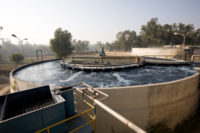Companies that supply equipment for the cutting and deboning process are always trying to improve their automated lines and the sharpness of the blades they are using in their systems. Whether it is using new blade materials or better understanding of how to maintain equipment, suppliers are always trying to progress the cutting and deboning process.
The greatest area processors have to improve their cutting and deboning lines is through their people.
“They are constantly looking at new ways to train the personnel, and there are whole slews of different theories on the right way to train someone to debone a chicken,” says Gary McMurray, chief of Georgia Tech Research Institute’s (GTRI) Food Processing Technology Division, Atlanta.“They are just constantly tweaking it and trying to make it better.”
Attaining good yields really boils down to having quality, well-trained people and keeping a low turnover rate, agrees Dale Hart, director of food production at Cooper Farms, Van Wert, Ohio.
“We’ve learned that experience and in-depth training allows our team members to be more confident and be higher-quality deboning line members,” he says. “With a focus on values and income, our team-centered company culture is just another reason why they work to achieve the best yields they can. You just can’t replace quality people.”
In line with employee training, many processors are examining yield measurement systems, which can provide feedback to workers.Some companies even have developed a reward system for the best deboning lines by averaging yield calculations.
“The traditional way of doing this is at the end of the line,” McMurray says. “They have one employee take a random sample of one of the carcasses and do a scrape test to measure how much meat is left of a percentage of the carcass. Some companies will put a big board up at the end of the line to measure which line has the best yield.”
One of the projects GTRI has in the works is an online yield-measurement system.
“We are trying to do something where you can measure the yield on every carcass, so that you can get immediate feedback on each line as to which line is running best,” McMurray says. “That’s really the only lever that the processors have to pull, whether it’s training and accurate online measurement of the yield. But with that it’s always hard because it’s really a line, and how the line as a whole is doing.”
Advancing the cut
The greatest advancements to improve blades, tools and equipment being used for cutting and deboning lines are using new materials for these pieces that last longer, don’t need sharpening and give a better cut. In turn, processors are continuing to pay attention to keeping their blades straight to provide a better cut and yield.
Although automation hasn’t changed much in the past year, it continues to make inroads in the cutting and deboning process as well. Yield is still an important issue to many processors, but some plants have justified moving to fully automated cutting lines because it can cut manual labor costs and other expenses involved, McMurray says.
When looking at what future advancements are in store for cutting and deboning lines, it’s pretty easy to see that automation is going to play a role; but that’s a simplistic answer, McMurray says.
“What you really want to see out of these lines, and what I think the future really is going to be, is having a unified data-collection system of the entire process that is going to allow you to customize the cut or the product that you are going to be producing,” he says. “As soon as that bird comes in, you have immediately identified that that bird — this breast meat — is going to be this size and it’s going to be optimal for this part of my business for this customer.”
For example, processors eventually will be able to track the bird all the way through processing, including points such as when it passed USDA inspection, pre-weight before it went into the chiller, post-weight out of the chiller, and that it was tested for contaminants and pathogens. In addition, that it was washed with how much water and its temperature profile throughout the process could be monitored. When the bird reaches the cutting line, the bird would be cut specifically for a product with the meat taken off and the yield measured automatically, and then shifted off to a further processing line.
“Deboning is viewed as one of those last steps, but it can’t be looked at in isolation. And the cutting, in one sense, is one of the last steps that occurs,” McMurray says. “They are part of a system. That system is everything from when the bird comes in to when it goes to the customer and optimizing that process is what this is all about. They all have to be done together.
“When they have that consistent data, and that data would know what that breast looks like, and making sure it goes to the right customer to maximize the yield of that breast meat, that’s where you can see more value.”




Report Abusive Comment